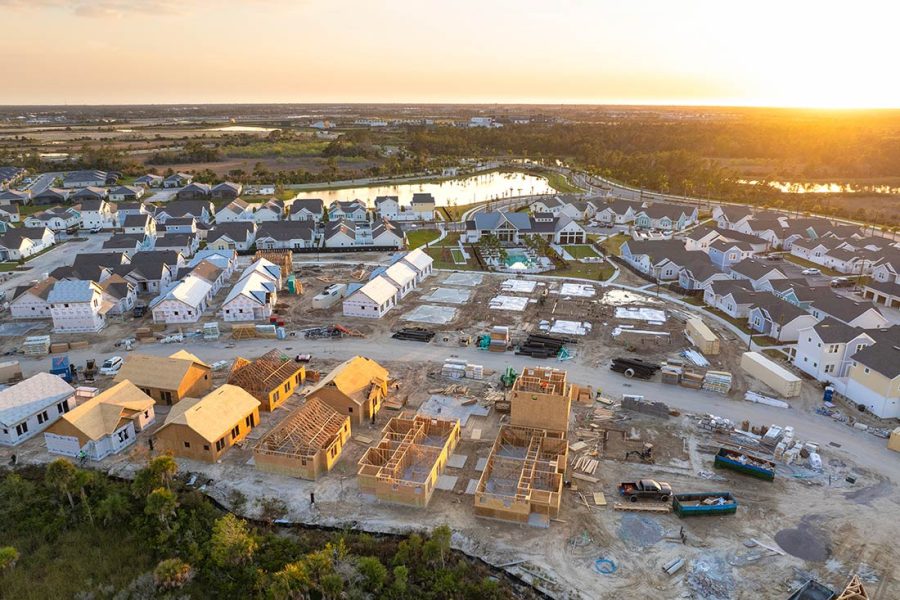- Navigator
- Strategic Planning

By Jim Damicis, Camoin Associates, and Simon Anderson, Venture Foresight LLC
The world was changing rapidly before the pandemic, but now it seems everything has been put on “fast-forward.”
Trends that were still at the edges pre-pandemic have been accelerated into the mainstream. Telehealth, mass remote work, and online education just to name a few. Communities and organizations around the world have been forced into rapid digital transformation. Additionally, it’s not just the pandemic and new technology changing the world rapidly. Climate change and related events, globalization, and political and cultural polarization are all part of changing global dynamics. All these changes are impacting economic and community development.
In our work with communities, regions, states, and business we have learned and applied many traditional analytical and strategic planning approaches and tools. For a time, they worked well. However, a little over ten years ago, we began to notice that these traditional approaches as well as “best practices” were becoming less effective at preparing for change and creating implementation that achieved stated vision, goals, and strategies. Traditional strategic planning approaches like SWOT assessment (strengths, weakness, opportunities, and threats) were resulting in far too great a focus on long-standing, static perceptions about what “was” as opposed to “what could be.”
These issues with traditional approaches continue today.
Engagement is often only capturing the voices of the same select few traditional leaders and naysayers and fails to excite diverse participants about future possibilities. Data and analytics are failing to predict the future and not leading to enough consideration of how to be prepared and ready to adapt. All of these factors are resulting in traditional strategic planning failing to meet the social and cultural emphasis on the goals of resiliency, sustainability, equity, and inclusion.
Why is this? After a lot of observation, research, sharing and learning, we discovered that several factors are at the core of why traditional strategic planning approaches are becoming increasingly ineffective:
- Technology and culture are changing more rapidly and more frequently than in the past and driving the constant need for change in business models and applications
- Economies and communities are living, complex ecosystems – no one person or organization can control another or their outcomes
This leads to the challenge of navigating within a new economic future based on the following factors:
- The world is changing rapidly in almost all areas of our lives and careers
- We no longer can rely solely rely on “best practices” and “modeling to predict”
- We must get comfortable with “acting amidst the unknown” being adaptable to change
- New processes, skills, and tools of are needed for:
- Thinking, planning, and acting
- Analyzing, strategizing, collaborating, and implementing
- Building capacities for adapting
To meet this challenge, we needed to find an approach that was better suited to the increasingly changing and complex world of communities and economies. Through experimenting, learning, and adapting, we have developed two new approaches that are effective at creating more resilient and sustainable strategies, policies, and actions. They are:
Applied Foresight
Using the Future Ready Formula: 3A Thinking, to become “future ready” and able to navigate emerging challenges and capitalize on new opportunities
Adaptive Planning
Integrating applied foresight into planning by creating processes for Preparing, Organizing, Engaging, Assessing, and Adapting
An understanding of these two approaches and how they work together can greatly improve planning, evaluating, and acting, and, in turn, increase the resilience of our communities and regions into the future. What is involved in these two approaches?
First, we must pay Attention to the technologies and trends that aren’t directly affecting us yet. Often, the tech at the “edges” will give us a preview of what’s to come.
Next, we can begin to Anticipate how these new technologies or trends could impact us. Will they create opportunities for you? What future challenges could be avoided because you anticipated them today?
Finally, and most importantly, what Actions can you take now based on what you’re paying attention to and anticipating? The last “A” is critical because without it, the first two don’t matter.
But it doesn’t end there! We must continue the process beyond a “one-off” planning exercise and continue to learn, adapt, and act.




